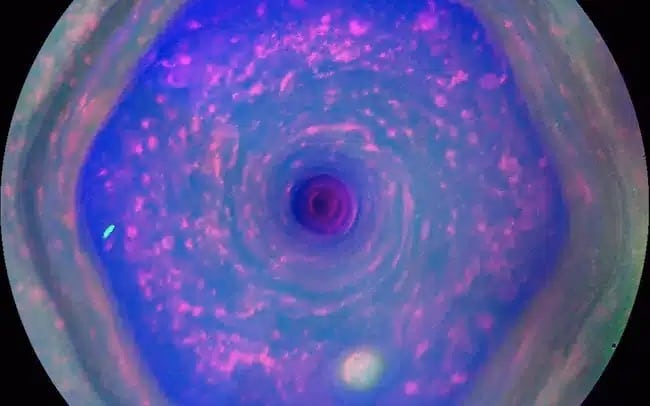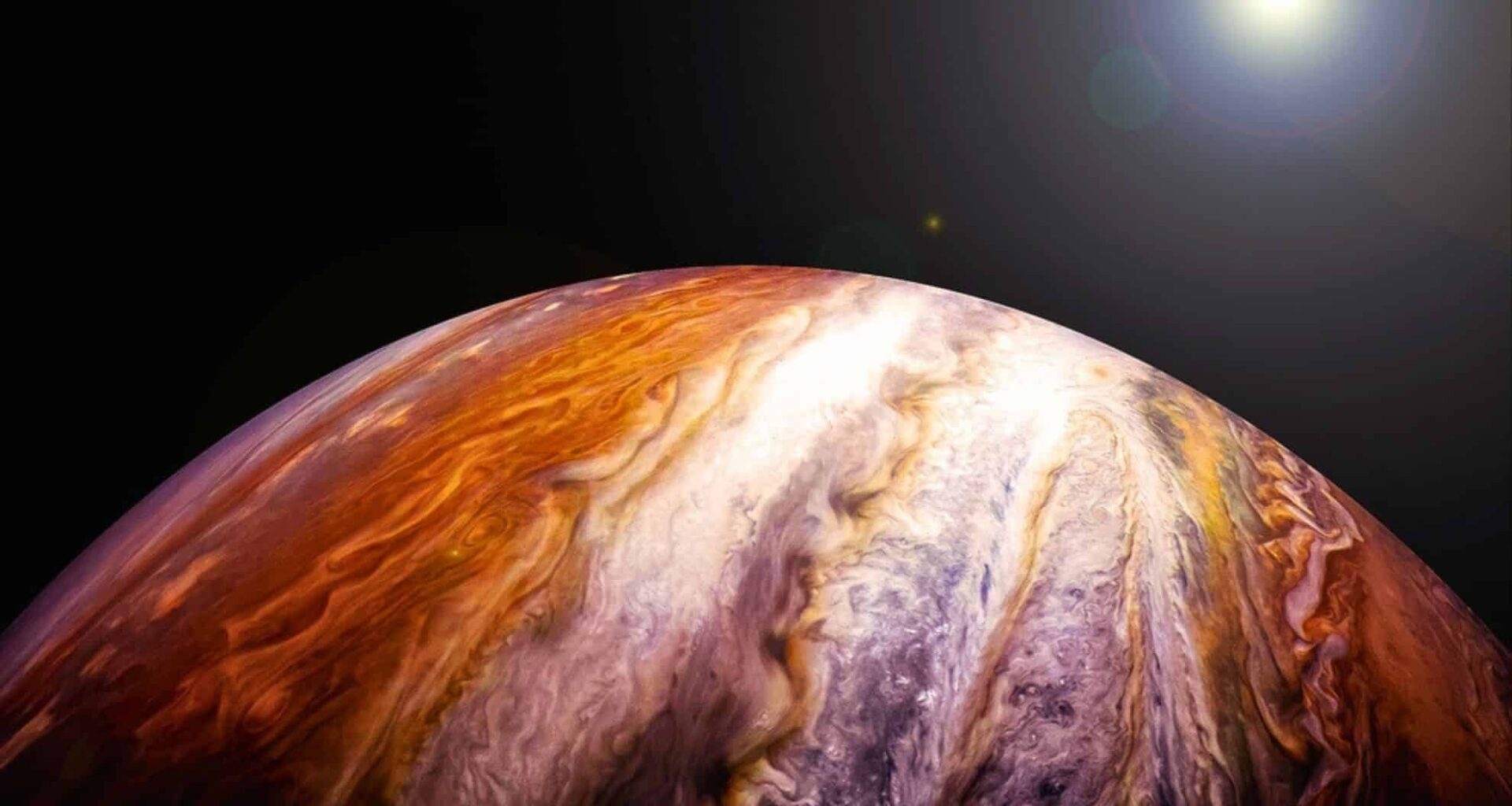Saturn, the solar system’s most visually iconic planet, has just revealed a deeply puzzling side. Using the James Webb Space Telescope (JWST), astronomers have detected two previously unobserved phenomena high in the planet’s atmosphere—enigmatic features with no known precedent or theoretical explanation.
The peer-reviewed study, published in Geophysical Research Letters, details a pair of atmospheric anomalies: a string of dark structures drifting in Saturn’s ionosphere and an asymmetric star-shaped pattern in the stratosphere directly below. Both features defy predictions from existing models of thermospheric and stratospheric behavior on gas giants.
After decades of observation, including 13 years of in situ monitoring by the Cassini mission, Saturn remains in many ways a frontier of planetary science. These new findings widen that frontier considerably.
Unexplained “Beads” in the Ionized Upper Atmosphere
JWST’s observations focused on Saturn’s sub-auroral ionosphere, a region roughly 1,100 kilometers above the cloud tops. There, researchers observed a chain of dark infrared-absorbing structures between 55° and 65° north latitude. The formations—referred to in the paper as “dark beads”—were accompanied by faint halos of brighter emission and appeared only on one side of the planet.
These structures persisted for nearly 10 hours, but showed subtle drift both in latitude and position, indicating potential movement within Saturn’s upper atmospheric flows. The beads are not co-located with Saturn’s known auroral zones and do not align with magnetospheric features associated with ring rain or the moon Enceladus.

According to the study, “these dark beads are most likely the result of thermospheric dynamics driven by ionospheric winds,” specifically interactions between super-rotating and sub-rotating flows in the ionosphere. One proposed mechanism is Kelvin–Helmholtz instability along the boundaries of these opposing wind regimes.
Yet, the beads have no known analog on other planets. “No known ionospheric planetary analog exists for these features,” the authors write, emphasizing their novelty. While similar dark spots have been seen on Jupiter, those were recently linked to magnetic field irregularities, which Saturn lacks at similar scales.
A Broken Six-Pointed Star in the Stratosphere
Below the ionosphere, in the upper stratosphere at approximately 600 kilometers altitude, the research team discovered a second anomaly. In a thin layer of fluorescing methane, JWST detected a six-armed star-shaped structure, dark against the surrounding brightness. Notably, two of the six arms were missing, leaving a skewed, asymmetric figure unlike anything previously recorded on Saturn or elsewhere.
The structure spans a broad latitude band—from 60°N downward toward 40°N—and is centered over a dark polar cap. The researchers mapped the feature using spatially resolved methane fluorescence, a measurement made possible only through JWST’s extreme sensitivity in the near-infrared.
The observed emission across a Saturnian day observed by JWST. Each panel shows a sequence of 26 dither-combined images at the North pole of Saturn. Credit: Geophysical Research Letters
The paper notes that “the upper stratosphere appears to have an atmospheric formation unlike anything previously known,” and that this malformed star is “again unlike anything previously observed at other planets.”
Some alignment was observed between the locations of the brightest “arms” of the star and several of the ionospheric beads above, raising questions about possible vertical coupling across atmospheric layers. However, the authors clearly state: “there is little evidence of the dark beads in H₃⁺ being driven by the underlying atmosphere.”
Magnetosphere and Ring Systems Unlikely to Be the Cause
The research team systematically evaluated known mechanisms behind Saturnian atmospheric activity and ruled out both auroral forcing and ring-particle precipitation as causes of the observed features. Notably, the ionospheric beads do not align with Enceladus’s magnetic footprint, and there was no detectable response in H₃⁺ emission from the E-ring’s expected contribution.
“The expectation was bands of ‘ring rain’ brightening and darkening within latitudes,” the study notes, “but no clear banding exists here.”

This disconnect was confirmed by the absence of auroral activity during JWST’s observations, which occurred six months before Saturn’s equinox—a period known for minimal solar-driven variability. This rare combination of low auroral activity and peak observational geometry gave scientists an unusually unperturbed view of Saturn’s native atmospheric dynamics.
What These Features Reveal—and What They Don’t
These discoveries push planetary science into new terrain. The features observed in Saturn’s ionosphere and stratosphere suggest the presence of highly localized, dynamically stable structures that exist outside the influence of magnetospheric drivers and deeper atmospheric weather systems.
The study emphasizes a significant unknown: the 400-kilometer region of Saturn’s atmosphere that lies between the fluorescing methane and the H₃⁺-dominated ionosphere. This layer has no known emissive species and remains essentially unexplored. It may hold the key to understanding how the bead and star patterns are sustained—and possibly linked.
Current global circulation models of Saturn do not account for such layered, asymmetric behavior at high latitudes. Nor do they explain why the structures would form only in certain longitudinal zones, without corresponding features on the opposite side of the planet.
